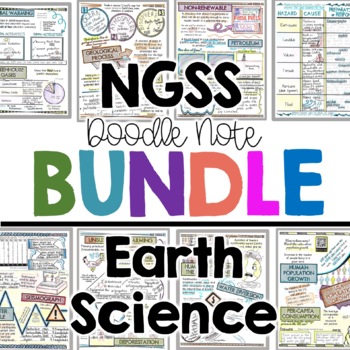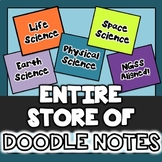NGSS Earth and Space (MS-ESS) Doodle Note Bundle
- Zip
What educators are saying
Products in this Bundle (15)
showing 1-5 of 15 products
Bonus
Also included in
- Doodle notes to help build NGSS vocabulary skills. Use these science notes to parallel your lessons and add visual triggers to improve memory of content. These doodle notes specifically address the NGSS standards for middle school, while providing concrete visuals to support learners of all abilitiPrice $172.45Original Price $215.56Save $43.11
- This doodle note bundle includes a huge variety of middle school science notes. These doodle notes have been used in my classroom and so many others. They will engage your students and save you hours of time!This product is listed at a 30% discount. Any new doodle note resources added to my TpT stoPrice $323.11Original Price $403.89Save $80.78
Description
ESS Vocabulary SCIENCE Doodle Note Bundle for ALL Middle School Earth and Space Science Key Ideas
(Watch the video preview for an overview of what pages are included.)
Interactive doodle note glossary for supporting the core ideas listed in the EARTH and SPACE Next Generation Science Standards for middle school. The definition is provided for each key concept! Students respond to each term with a short visual task to improve memory. Great for scaffolding, reinforcement and remediation of key vocabulary.
MS-ESS1 Earth's Place in the Universe
15 Science Doodle Note pages specifically aligned to NGSS Earth and Space Science 1
MS-ESS2 Earth's Systems
30 Science Doodle Note Pages specifically aligned to NGSS Earth and Space Science 2
MS-ESS3 Earth and Human Activity
15 Science Doodle Note Pages specifically aligned to NGSS Earth and Space Science 3
Includes:
- Total of 60 pages of science vocabulary doodle notes for standards ESS1, ESS2, ESS3.
- Full color answer keys of each doodle note page
- Interactive links for each standard (Students click and gather information to complete the doodle notes.)







